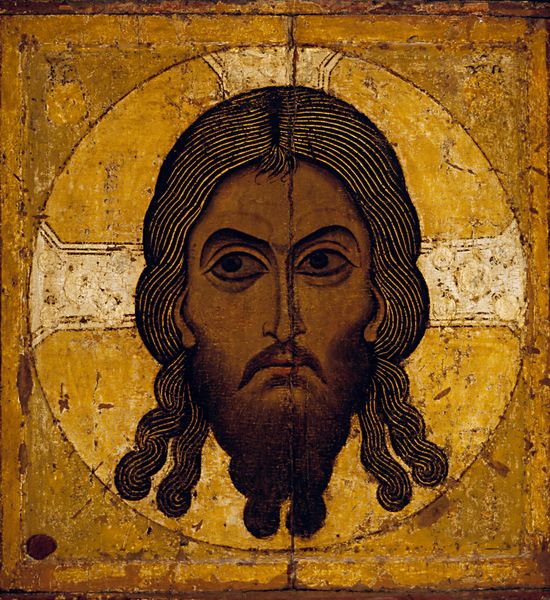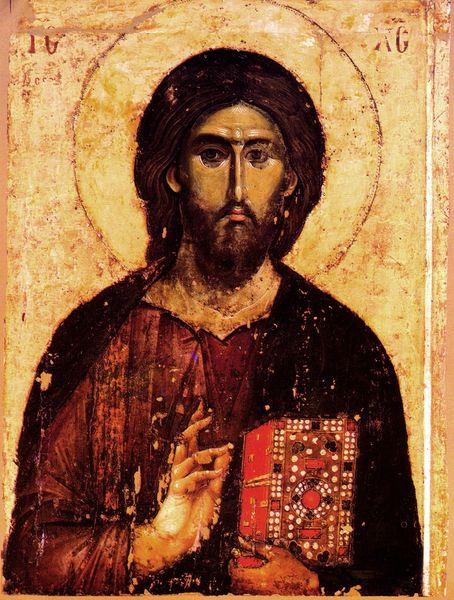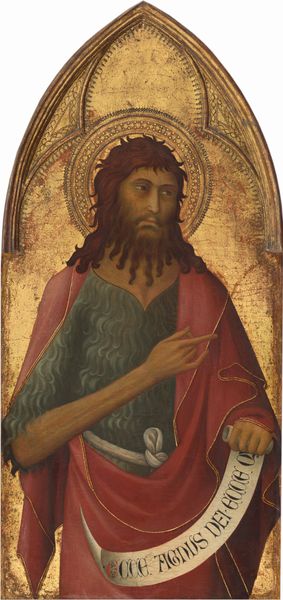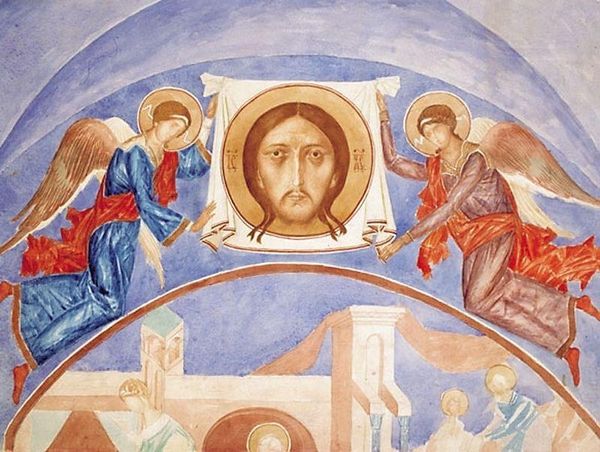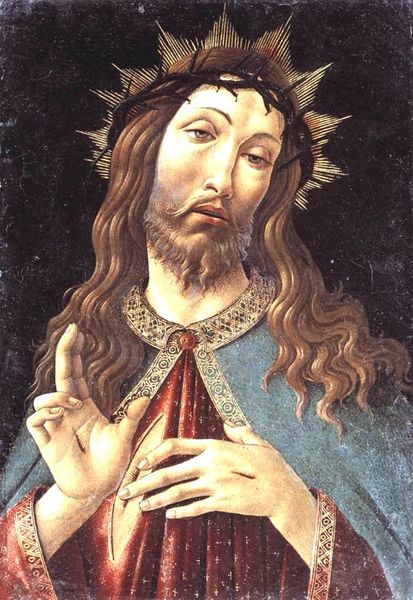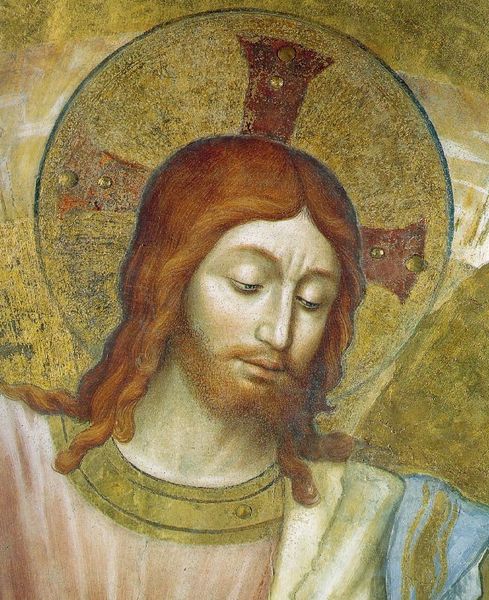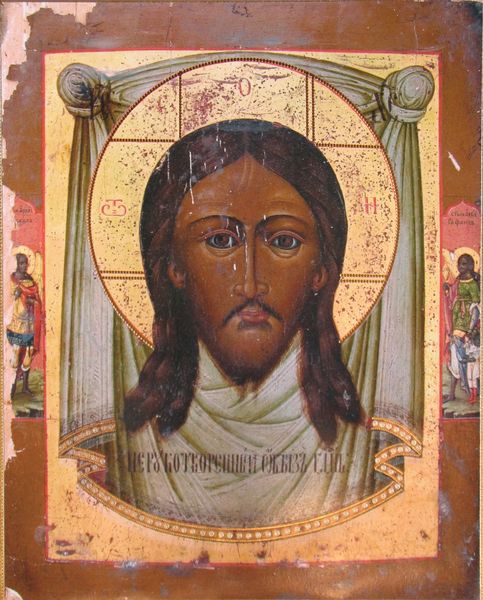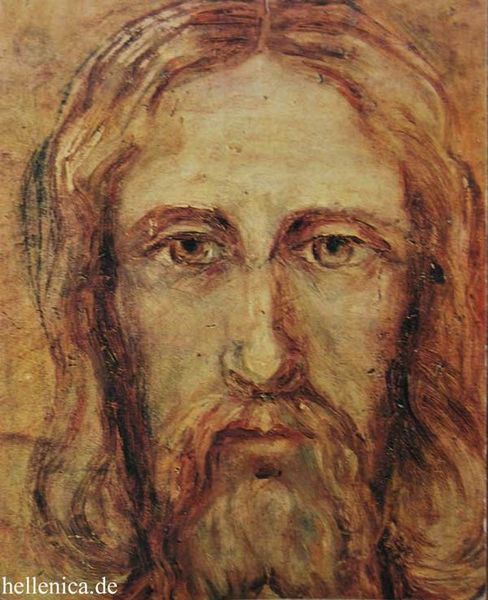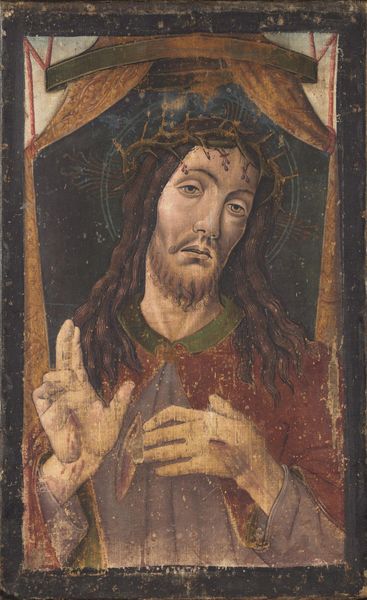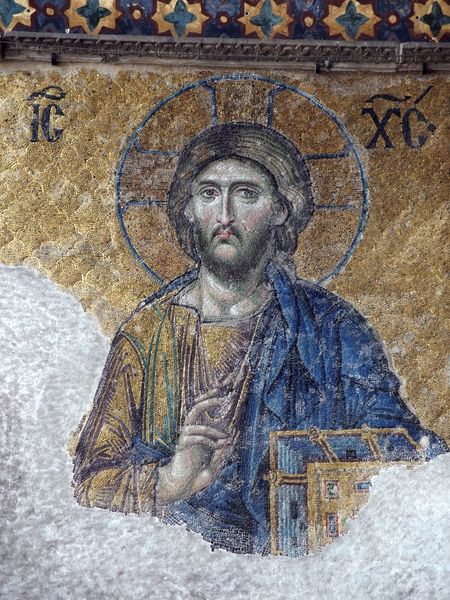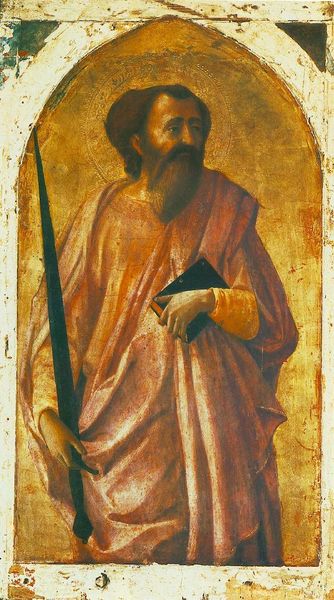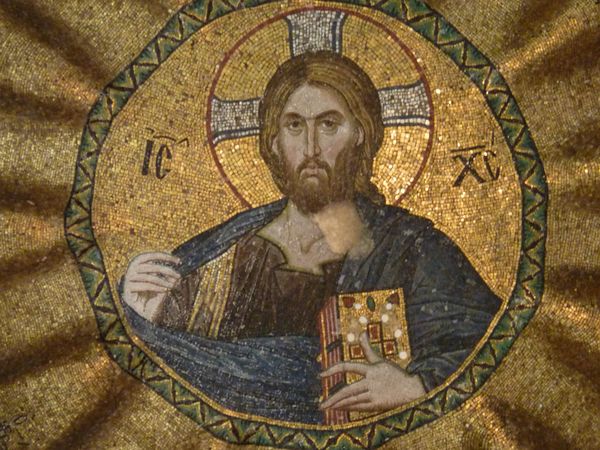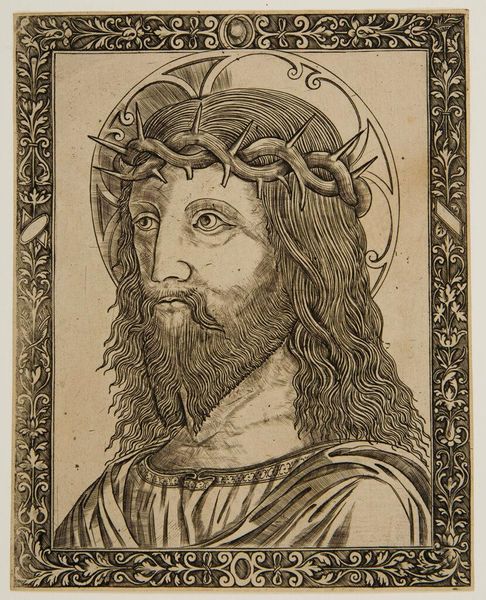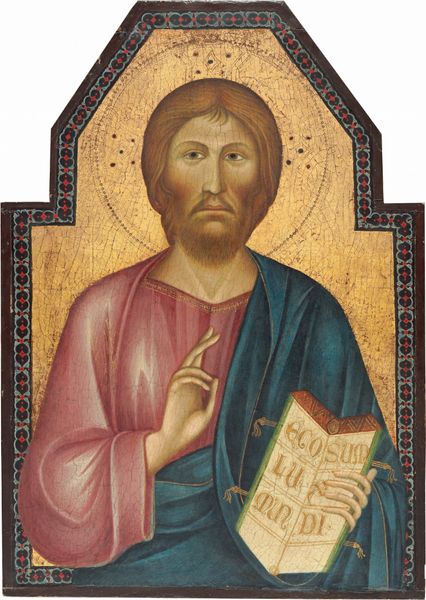
Icon Spas nerukotvornyi (Savior-Not-Made-by-Hands) from the Maniava Hermitage iconostasis 1705
0:00
0:00
painting, oil-paint
#
portrait
#
byzantine-art
#
painting
#
oil-paint
#
oil painting
Copyright: Public domain
Curator: Standing before us is “Icon Spas nerukotvornyi (Savior-Not-Made-by-Hands) from the Maniava Hermitage iconostasis” painted in 1705 by Yov Kondzelevych using oil paints. Editor: It's immediately striking. The face, haloed not in gold, but in thorns, possesses such an intense quiet. The cherubic figures feel like a dreamlike offering. Curator: It’s an unusual but significant representation, particularly for its time. The icon belongs to a specific type called "Mandylion", depicting the Holy Face imprinted on a cloth. Editor: Almost photographic, really. In that early-image kind of way... It makes you consider ideas around authenticity and evidence, or maybe just longing? Like a desire to see something, *anything,* clear. Curator: Precisely. Kondzelevych, as an artist and a prominent figure in the Ukrainian Orthodox Church, was consciously reviving Byzantine traditions within a local context. The placement within the iconostasis signified a visual theology meant to guide the faithful. Editor: There’s this rawness to the medium… Oil paint, not something one immediately associates with icon painting! The earthy tones coupled with its symbolic weight creates an odd, but amazing, tension. Curator: Indeed, Kondzelevych bridged those worlds. He draws upon earlier artistic styles to produce pieces, like this one, to reassert religious identity amidst socio-political pressures of the time. Editor: I feel invited to witness a mystery. Not in some theatrical way, but in a very personal one. Like I’m standing at a distance, maybe, being shown something sacred and vulnerable at the same time. Curator: Yes, there is that quality! It’s like a shared secret or silent revelation that prompts introspection rather than spectacle. The 'Savior-Not-Made-by-Hands’ appears not just as an image, but an encounter. Editor: Thanks for bringing this painting to life for me! The more I gaze upon this oil painting, the more I see that tension turn into beauty. It invites reflection on its religious and political purpose to make its mark. Curator: My pleasure. Its history as a representation of resilience, and reflection of cultural identity continues to speak powerfully to us today.
Comments
No comments
Be the first to comment and join the conversation on the ultimate creative platform.
